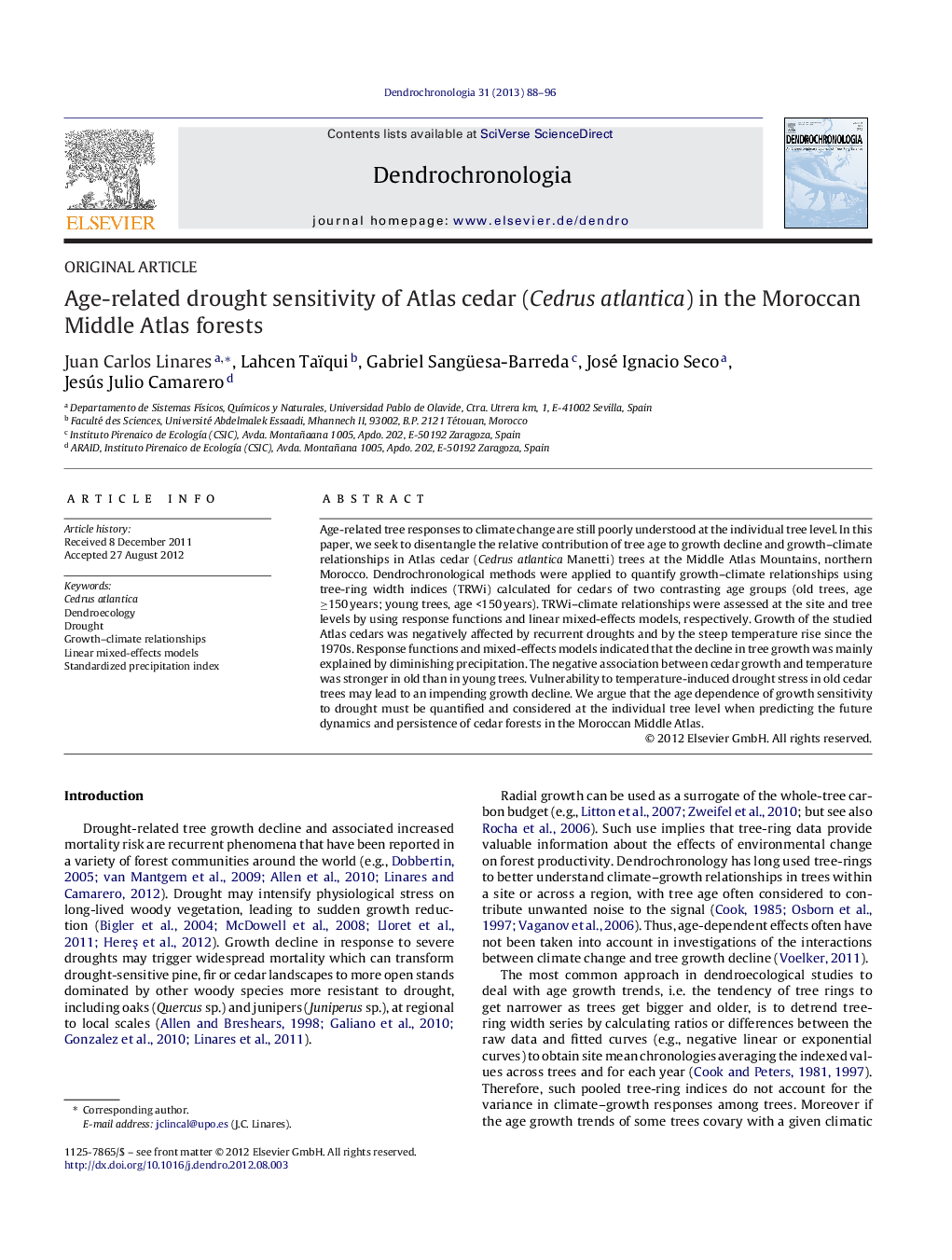| Article ID | Journal | Published Year | Pages | File Type |
|---|---|---|---|---|
| 85636 | Dendrochronologia | 2013 | 9 Pages |
Age-related tree responses to climate change are still poorly understood at the individual tree level. In this paper, we seek to disentangle the relative contribution of tree age to growth decline and growth–climate relationships in Atlas cedar (Cedrus atlantica Manetti) trees at the Middle Atlas Mountains, northern Morocco. Dendrochronological methods were applied to quantify growth–climate relationships using tree-ring width indices (TRWi) calculated for cedars of two contrasting age groups (old trees, age ≥150 years; young trees, age <150 years). TRWi–climate relationships were assessed at the site and tree levels by using response functions and linear mixed-effects models, respectively. Growth of the studied Atlas cedars was negatively affected by recurrent droughts and by the steep temperature rise since the 1970s. Response functions and mixed-effects models indicated that the decline in tree growth was mainly explained by diminishing precipitation. The negative association between cedar growth and temperature was stronger in old than in young trees. Vulnerability to temperature-induced drought stress in old cedar trees may lead to an impending growth decline. We argue that the age dependence of growth sensitivity to drought must be quantified and considered at the individual tree level when predicting the future dynamics and persistence of cedar forests in the Moroccan Middle Atlas.
